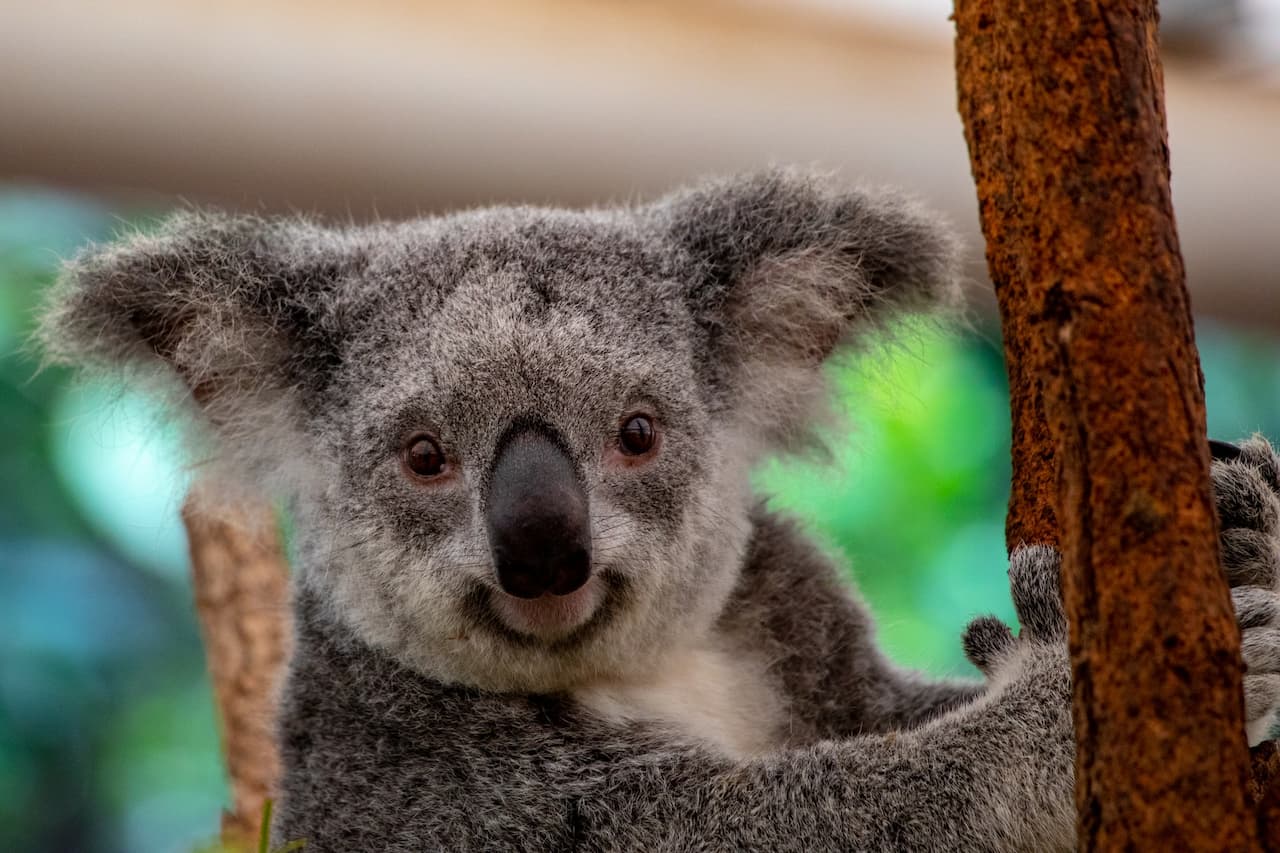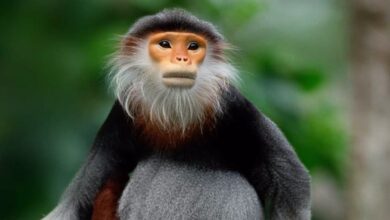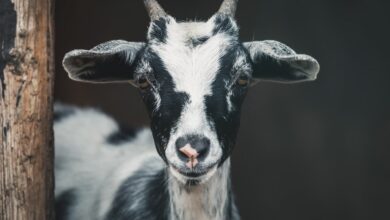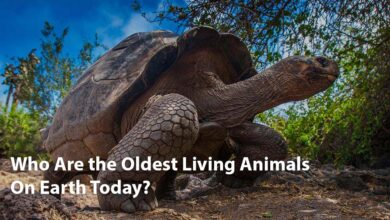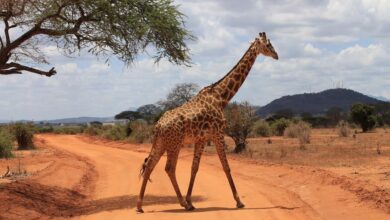Koalas play a vital role in Australian ecology, as the food they excrete on the forest floor helps forests expand and rejuvenate, which in turn increases biodiversity. It is well-known that insects and tiny animals can find nourishment in droppings. Birds have been observed using their hair as insulation in their nests.
Love for koalas extends far beyond Australia. They bring attention to the problems facing animals and theirhabitats.
Therefore in this sense, they serve as “ambassador species” for all native wildlife. In conserving koalas and their environment, humans are also safeguarding the homes of countless other species of flora and fauna.
What is a koala?
Throughout Australia, the koala is recognized as a symbol of the country. Koalas are marsupials, which means they have a pouch in which their young develop.
Koalas may appear fluffy, but their hair is actually more similar to coarse sheep’s wool. Each hand has two opposing thumbs, and the soles of their feet and hands are covered in rough pads and claws that allow them to firmly grasp onto trees. Their feet include two joined toes that they use to groom their fur.
Habitats of koalas
Koalas like particular kinds of bushland, which we call their “habitat.” You may spot them anywhere from low inland woods to tall eucalypt forests or islands in the ocean.
It is believed that the progenitors from whom modern Koalas arose lived in the rainforests that covered most of Australia millions of years ago, even though Koalas do not currently inhabit rainforests.
To put it another way, koala populations only form when there is an appropriate environment for them to live in.
The presence of other koalas and the presence of tree species chosen by koalas (typically eucalypts, but also some non-eucalypts) growing in certain associations on acceptable soils with enough rainfall are the two most significant criteria which make habitats suitable.
The presence of major (or favorite) tree species is crucial to the social stability of Koala populations, according to the available research.
It is unlikely that a Koala population would thrive in a region, or at least use the area if just one or two of the Koala’s preferred tree species are present.
Because of this, it’s not wise to rely on a blanket list of trees that Koalas prefer to eat. Restoring Koala habitat through tree plantings might be in vain if important species are left out.
What do koalas eat?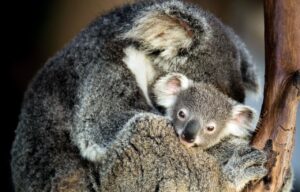
Koalas are herbivores that spend their time in the trees and get their food from such places. When it comes to specifics, a koala’s diet consists primarily of one thing: eucalyptus tree leaves.
While there are more than 600 different kinds of eucalyptus trees, koalas have a decided predilection for the leaves of a small subset of those plants. Additionally, a koala’s food might vary from one area to another due to the fact that different types of eucalyptus trees thrive in various areas.
However, koalas will visit and feed on the leaves of trees of different kinds. Koalas, like many other marsupials, rely on a wide variety of trees for food. Even yet, eucalyptus leaves remain the koala’s primary source of nutrition. Like the giant panda, koala populations would decline if eucalyptus trees were to take over.
What do baby koalas eat?
Koalas, like other marsupials, have babies that aren’t fully formed when they’re born. After a gestation period of 33–35 days, a female koala will give birth to a single joey. The typical joey is just 0.02 ounces in weight and has no life outside of its mother’s care.
The newborn joey will immediately crawl into its mother’s pouch, where it will stay for the next six to seven months. The joey receives nourishment from its mother through the pouch. Women koalas, on the other hand, have very low milk production. Instead, the joey will nurse from its mother for the first year of its life.
When a mother koala’s young reach around 6 months old, she will start weaning them onto a diet of eucalyptus leaves. The female will consume leaves, then generate fecal pap from the predigested food to give to her joey.
Threats to koalas
One of the biggest dangers to koalas is the destruction of their habitat. Koalas rely on eucalyptus tree forests for shelter and food, but they are disappearing as a result of land clearance, deforestation, and urbanization.
Therefore, koalas become susceptible to predation by dogs and car hits, and there is mounting evidence that the stress caused by these threats is negatively affecting their long-term health and welfare, eventually leading to illness.
Some local koala populations in New South Wales have been driven to near extinction in recent years due to the influence of climate change, which has included record droughts and bushfires.
How many koalas are left?
This is not a simple inquiry, and it would involve a tremendous amount of work on the part of scientists. This is due to the fact that koalas are hard to see in the wild, are dispersed across broad areas, and are not monitored in a standardized way.
We do know that millions of koalas formerly roamed Australia, but today it is a rare occurrence to spot one in the wild. Although they are thought to be more numerous in Victoria and South Australia, a plethora of welfare hazards have led to a precipitous decline in their population in Queensland and New South Wales. Koalas are in danger and require everyone’s assistance.
How habitat destruction affects koalas?
Understanding the Koala’s connection to its habitat is a prerequisite to devising solutions to the animal’s difficulties. Consider how you would react if your home was suddenly taken away from you and you were a Koala—then you’ll have a better understanding of the impact of habitat loss on these animals.
Consider that someone has destroyed your house and the majority of the other buildings and streets in your area. It’s hard to imagine how you’d feel if you came home to discover your street completely different and your house was gone.
It would make you feel miserable, down, mad, anxious, confused, and depressed. Then try to picture how you’d feel if you were starving and you couldn’t get to a store to buy food. Your hunger would increase, and if you couldn’t locate a safe place to sleep, you’d be in a terrible position soon long.
When a koala’s environment is destroyed to make room for a shopping mall, a subdivision, or a farm, the animal may feel this way. Assuming they get it through the clearing alive, they’ll still face challenges when trying to settle in a new location.
Koalas are vulnerable to threats, including being lost in a developed area, being hit by automobiles, being attacked by dogs, and drowning in swimming pools. It seems likely that suburban Koalas will go extinct unless they can find a large enough area of undisturbed habitat to establish a colony.
Koalas experiencing this kind of stress are more likely to become ill, according to scientific research. They also give birth to fewer offspring every cycle.
Conclusion
Koalas are a type of marsupial, not a bear. Understand what makes koalas so special, from their six opposable “thumbs” to their pouches that face downwards and their propensity for spending nearly the whole day dozing off in the branches of trees. Read about a koala’s mating call.

